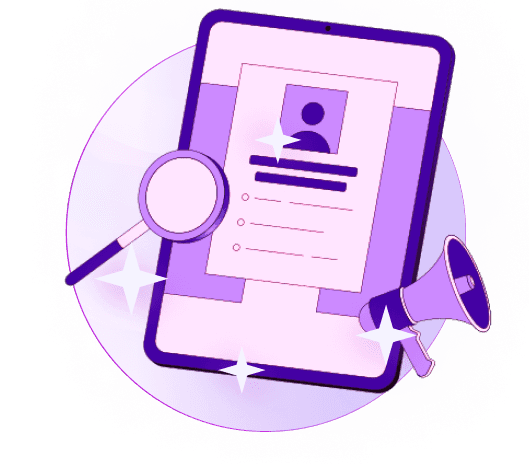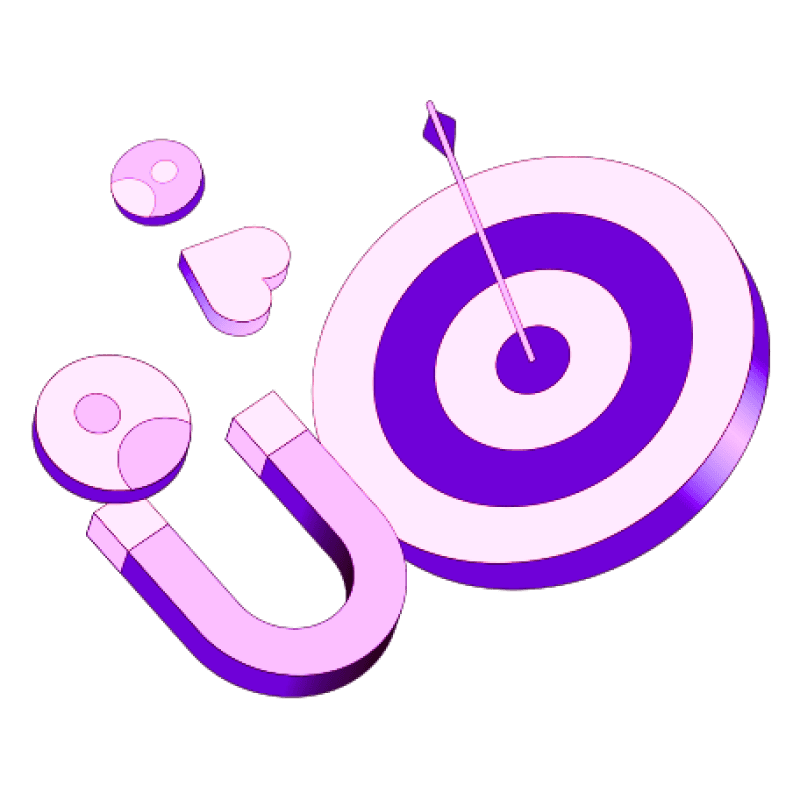Blogs
Articles

How to Use Intent Data to Identify and Prioritize B2B Buyers
Most marketers (91%) now make use of information from intent data to identify and prioritize B2B buyers. The reason is simple. Intent data reshapes the scene of marketing and sales from guesswork to strategic precision.
Intent data reveals when potential customers actively research solutions like yours. Sales teams can focus their efforts on leads that show high buying signals, which makes intent data marketing work substantially better. Research shows that 93% of marketers achieved higher conversion rates after applying purchase-related signals.
Companies that use customer intent data quickly spot high-value prospects and create personalized outreach that speeds up their sales cycle. On top of that, the right tools help track the customer's experience and deliver a 2.9x boost in sales pipeline efficiency.
This piece breaks down the practical steps to use intent data that will enhance your B2B strategy. We cover everything from basic system setup to identifying sales qualified leads and advanced ABM applications. You'll learn how to turn prospect intent data into your competitive edge.
How customer intent data reveals buying signals?
Intent signals are digital breadcrumbs that potential buyers leave as they move through their buying process. These behavioral clues show a prospect's interest in your solution and reveal their position in the buying cycle.
Companies that effectively use buyer intent signals see larger transaction sizes (43%), more concluded deals (38%), and improved conversion rates (47%). This data gives you a significant edge over competitors.
Buying signals fall into several categories:
Website Behavior: Prospects show active interest when they visit your pricing page repeatedly, download whitepapers, or interact with product demos. Your brand's direct interactions are captured through first-party intent data.
Search Activity: Third-party intent data tracks potential customers' specific searches across publisher networks and review sites. Mid-funnel interest appears when buyers compare vendors on G2 or Capterra.
Organizational Signals: New job postings for solution-related roles and changes in key buying positions often point to upcoming strategic investments or tech stack updates.
Technology Signals: Recent changes or additions to tech stacks might indicate readiness to adopt complementary solutions.
Intent data helps you shift from reactive to proactive approaches. You can spot companies that display buying behavior before they complete your website forms.
This data lets you target the 3-5% of potential customers actively looking to buy instead of spending resources on unqualified prospects. A complete view of prospect readiness comes from tracking both first-party and third-party signals.
Your outreach becomes more personal based on the topics and solutions your prospects research. This targeted approach creates meaningful interactions throughout the buying process and places your brand where prospects need you most.
Setting Up an Intent Data System
A step-by-step approach helps build an effective intent data system. These six vital steps will help you build a strong foundation to identify and prioritize B2B buyers.
Define your goals and use cases
The original step requires clarity about your intent data objectives. You might want to focus on lead generation, power account-based marketing campaigns, or reduce customer churn. Your goals will determine which data sources and metrics need priority. You should think over whether your sales cycle length and complexity can benefit from intent-based marketing.
Identify key intent signals to track
Every signal doesn't carry the same weight. Your focus should be on high-value indicators like pricing page visits, webinar attendance, and demo requests. You need to distinguish between first-party signals (from your owned channels), second-party data (partner platforms), and third-party signals (publisher networks). These signals should map to different stages in your customer's experience for better context.
Integrate data sources into your CRM
Intent data becomes transformative with proper integration. The platforms you select should merge with your CRM and marketing automation tools. This makes shared contact records possible and helps segment audiences based on intent while creating a unified view of buyer behavior.
Tools like Persana.ai can make this process efficient by ensuring intent data flows directly into your existing systems.
Set up tracking and lead scoring
Your scoring model should weight signals based on their strength. High-intent activities like competitor research should receive higher point values. The score thresholds should flag high-priority accounts automatically typically 70+ on most platforms. Your model should include time decay so signals lose relevance after 30-60 days.
Create workflows for outreach
Data turns into action through automation. The workflows should trigger when specific intent thresholds are reached. Email sequences, sales alerts, or targeted ad campaigns based on the prospect's interests and buying stage could be part of these workflows.
Measure and refine your system
The system's effect on key metrics needs tracking: lead-to-opportunity conversion rates, campaign ROI, sales cycle length, and customer retention. Regular analysis of signals that lead to conversions will help adjust your approach.
Using Intent Data to Prioritize B2B Buyers
Intent data proves most valuable as it helps separate ready-to-buy prospects from casual browsers. Research shows only 3-5% of potential customers look to buy at any given time. Your team needs proper prioritization.
How to use intent data to identify sales qualified leads
Intent data makes lead qualification better by showing which prospects are sales-ready. Your team should prioritize leads who check pricing pages multiple times, attend product demonstrations, or download bottom-of-funnel content like case studies and buying guides. Teams should assign negative scores to leads who state they won't purchase to avoid wasted resources.
Scoring and segmenting based on buyer behavior
The best segmentation puts prospects into categories based on their intent level. A three-tiered approach works best:
Hot accounts: High intent scores (70+) matched with ideal customer profiles need immediate, tailored outreach
Warm accounts: Moderate interest signals need nurture campaigns to guide them through their buying process
Low accounts: Minimal signals need passive monitoring until activity picks up
Using sales intent data to time outreach
B2B sales success depends on timing. Quick action matters once intent signals spike because competitors won't wait. Your team needs real-time alerts within hours after target accounts show high intent. Research proves prospects respond best within 30 days of showing strong intent signals. Experts call this the "golden window" to connect.
How to use intent data to accelerate sales cycle
Intent data-driven personalization cuts sales cycles shorter. Your messages should reference specific signals—"We noticed your interest in expense management case studies". This targeted approach gets two to three times more responses than traditional methods.
Persana helps teams achieve up to 2.9x better pipeline results while cutting cost-per-opportunity by over a third by focusing on in-market buyers.
Advanced Applications and Optimization
You can tap into powerful new chances after becoming skilled at the simple concepts. Teams that succeed now put more than 50% of their budget into initiatives driven by intent data.
How to use intent data for ABM
Account-Based Marketing runs on intent data and delivers targeted outreach to high-value accounts. You can focus your resources on companies that are actually in-market by spotting which accounts actively research solutions. This strategy lets you create messages that target specific problems shown through their research behavior. Your content will generate higher engagement rates because it appeals to what prospects really care about.
Intent data for lead generation and retargeting
Intent signals make retargeting campaigns better by keeping track throughout the customer's trip. You can deliver precise content based on what prospects have showed interest in, instead of displaying generic ads. This targeted approach has improved MQL-to-opportunity ratios and pushed conversion rates up by 70%.
Avoiding common pitfalls with intent data
All the same, there are challenges. Companies gather intent signals but more than 50% can't put them to good use. Common mistakes include:
Too much reliance on third-party data without checking
Sales and marketing teams don't work together well
Not following privacy rules (GDPR/CCPA)
Treating every intent signal the same whatever the buying stage
How to use intent data for website outreach?
Website personalization powered by Persana ended up creating custom experiences that speak right to visitors' needs based on their intent signals. This method spots anonymous visitors, adjusts messages to match their interests, and uses data in immediate campaigns.
Conclusion
Intent data helps B2B marketers and sales teams work smarter instead of harder. This valuable information changes guesswork into strategic precision. Teams can focus on the small percentage of prospects who are actively looking to buy.
The benefits are clear. Companies using intent data strategies close bigger deals with higher conversion rates and shorter sales cycles. They can spot real buying signals through website interactions, search activities, organizational changes, and technology adoptions.
Setting up your intent data system follows a straightforward six-step process. You need to define goals, identify key signals, connect with your CRM, set up scoring systems, create automated workflows, and keep improving your approach.
Smart prioritization becomes easier when you group prospects into hot, warm, and low-intent categories. Your team can spend time on accounts most likely to convert while nurturing others. The best time to reach out is during the "golden window" - about 30 days after strong intent signals appear.
Account-based marketing and retargeting campaigns work better with intent data. Many companies collect intent signals, but those who put them to work gain a big competitive edge.
Intent data isn't just another marketing buzzword - it shows a radical change in understanding customer needs before they reach out. Sales and marketing teams can predict requirements, create personal interactions, and deliver more value at the right moment in the buyer's experience.
The way forward couldn't be clearer. Companies that excel at using intent data will connect with buyers at the right time with exactly what they need. This approach streamlines processes and changes customer acquisition into a more meaningful experience for everyone.
Key Takeaways
Intent data transforms B2B sales from guesswork to strategic precision by identifying the 3-5% of prospects actively researching solutions at any given time.
• Set up systematic tracking: Integrate first-party and third-party intent signals into your CRM with automated scoring to identify high-priority accounts (70+ scores) ready for immediate outreach.
• Time your outreach strategically: Act within the "golden window" of 30 days after strong intent signals appear, when prospects are most receptive to personalized engagement.
• Prioritize based on buying signals: Focus resources on hot accounts showing pricing page visits, demo requests, and competitor research rather than spreading efforts across unqualified leads.
• Personalize with context: Reference specific intent signals in your outreach to achieve 2-3x higher response rates and accelerate sales cycles through relevant messaging.
• Measure and optimize continuously: Track lead-to-opportunity conversion rates and pipeline efficiency to refine your intent data system and maximize ROI on sales efforts.
Companies implementing intent data strategies see 43% larger transaction sizes, 38% more concluded deals, and up to 2.9x increase in pipeline efficiency while reducing cost-per-opportunity by over a third.

Create Your Free Persana Account Today
Join 5000+ GTM leaders who are using Persana for their outbound needs.
How Persana increases your sales results
One of the most effective ways to ensure sales cycle consistency is by using AI-driven automation. A solution like Persana, and its AI SDR - Nia, helps you streamline significant parts of your sales process, including prospecting, outreach personalization, and follow-up.



